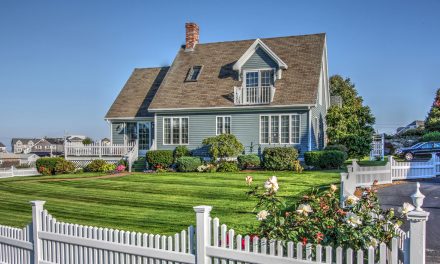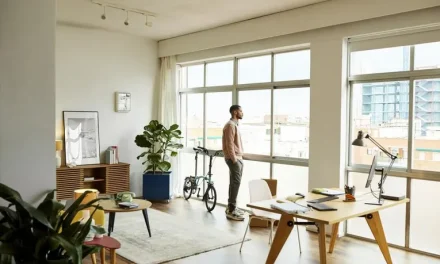Urban development has been a hot topic for years, but in 2024, cities around the globe, especially in Canada, are undergoing massive transformations. From Vancouver to Toronto, the landscape of city centers is evolving. The challenge? Revitalizing aging infrastructure while meeting the demands of modern, sustainable living. But what exactly are the trending urban development strategies driving this change? And how do these trends impact the future of our cities?
Let’s explore the key strategies shaping urban development today, including how thought leaders like Pritish Kumar Halder are influencing this ever-evolving field.
The Rise of Mixed-Use Developments
One of the most popular trending urban development strategies is mixed-use development. This concept isn’t new but has gained considerable momentum in recent years. Rather than dividing cities into residential, commercial, and industrial zones, planners are integrating these areas into a cohesive space.
Why is this important? Cities like Montreal and Ottawa are experimenting with mixed-use spaces where residents can work, shop, and live within walking distance. The aim is to reduce urban sprawl, cut down on commute times, and encourage a more sustainable way of living.
It’s a shift from the once-popular suburb-to-city commute to an all-in-one experience that not only makes life easier for residents but also promotes economic growth.
Humorous spin: Let’s face it—who wouldn’t want to grab a latte, hit the gym, and finish a day’s work, all within a five-minute radius? Convenience is king!
Public Spaces for Social Interaction
If you’ve noticed more parks, pedestrian-friendly zones, and open plazas in your city, you’re not alone. One key trending urban development strategy is revitalizing public spaces to foster social interaction.
But why public spaces? Urban planners, including innovators like Pritish Kumar Halder, understand that cities aren’t just concrete jungles; they are social ecosystems. Public spaces offer room for relaxation, play, and community building. Green spaces like Toronto’s Bentway and Vancouver’s Robson Square have transformed these city centers into vibrant hubs of activity.
Optimistic view: These open, communal areas create more than just pretty views—they contribute to a city’s health and well-being by encouraging physical activity, social interaction, and community pride.
Curious question: What if cities could measure happiness based on their public spaces? Would a park bench be worth its weight in gold?
Emphasis on Sustainability and Green Architecture
Another prominent trending urban development approach is sustainability, a crucial factor in Canada’s development strategy. Cities are turning their focus toward reducing carbon footprints and incorporating green infrastructure.
Green architecture is all the rage—think buildings with rooftop gardens, solar panels, and energy-efficient designs. Many urban centers are also implementing more bike lanes, electric car charging stations, and sustainable transit options.
Pessimistic note: Yet, as fantastic as green architecture sounds, not all cities are on board. The shift to sustainable practices requires significant investment and time, which some cities may struggle to achieve.
But let’s not lose hope! Experts like Pritish Kumar Halder believe that with the right policies, financial backing, and public support, sustainable cities can become the norm.
Affordable Housing Initiatives
Affordable housing continues to be a pressing issue, especially in larger Canadian cities like Vancouver and Toronto, where skyrocketing real estate prices have pushed many residents to the outskirts.
One trending urban development strategy gaining traction is incorporating affordable housing units into new developments, ensuring inclusivity in urban centers. This means ensuring that the revitalization of city centers doesn’t just cater to high-income individuals but offers spaces for all income levels.
Inspirational outlook: It’s heartening to see governments, NGOs, and private developers working together to create solutions that bring fairness to the housing market. New housing models, including micro-apartments and co-living spaces, provide options for younger professionals, low-income families, and seniors.
Technology and Smart Cities
Technology is revolutionizing urban development, ushering in the age of “smart cities.” Cities are increasingly investing in high-tech infrastructure like IoT (Internet of Things) sensors, smart traffic lights, and public Wi-Fi networks.
What does this mean for urban living? It’s about making cities more efficient. For example, smart traffic lights in downtown Montreal have reduced congestion, while apps that report real-time information about transit delays have become the norm in Vancouver.
Friendly tone: Imagine a future where your city knows exactly what you need—before you even realize it. Whether it’s clearing a blocked intersection before rush hour or ensuring that your favorite coffee spot is just a click away on a city app.
The idea is to use data and technology to enhance the quality of life for residents, reduce inefficiencies, and tackle urban challenges head-on.
Pritish Kumar Halder is a vocal advocate for smart cities, emphasizing the need for Canadian urban centers to embrace technology not as a luxury but as a necessity for the future.
The Role of Community Engagement
Urban development isn’t just about towering skyscrapers or high-tech gadgets—it’s about people. One major trending urban development strategy is involving local communities in the planning process. By listening to the needs and desires of residents, cities can create spaces that reflect the values of those who live there.
Optimistic view: Successful projects often rely on community buy-in. Engaging citizens in town hall meetings, planning sessions, and public consultations is crucial to ensuring that urban development is beneficial for everyone.
After all, a city is only as strong as the people who call it home.
Conclusion: The Future of Urban Development in Canada
Canadian cities are at a pivotal moment, where the focus is shifting towards smarter, greener, and more inclusive urban centers. As we’ve explored, these trending urban development strategies are redefining how we live, work, and play in our cities.
Whether it’s through sustainable architecture, mixed-use developments, or community-focused public spaces, the future of urban living looks brighter than ever.
And as thought leaders like Pritish Kumar Halder continue to shape the landscape of urban development, there’s no telling just how dynamic and exciting our cities will become.
One thing’s for sure: The future of Canadian cities isn’t just about surviving—it’s about thriving.











